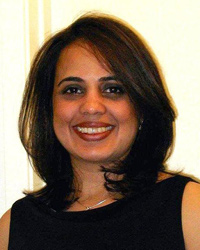One would have thought that after the harrowing 2012 Nirbhaya case, women’s safety in India would have become an unwavering priority. The protests, the promises, the outpouring of rage — it felt like a turning point. Yet here we are, over a decade later, grappling with the same cycle of fear, silence, and systemic violence. Just this year, a chilling incident in Kolkata reminded us how fragile the promises of safety truly are. As a nation that prides itself on being at the forefront of technology and economic clout, we must ask ourselves: what good are these milestones if half our population still walks in fear?
But this isn’t just an Indian story—it’s a global one. In Iran, a new law titled ‘Protection of the Family through Promoting the Culture of Hijab and Chastity’ restricts women’s clothing, movement, and education under severe penalties. Meanwhile, Iraq’s proposal to lower the legal marriage age for girls to nine has sparked international outrage. Different geographies, same patriarchal playbook.
It is within this stark reality that Iranian artist Shadi Ghadirian’s work emerges—not as a solution, but as a mirror. I am curating her exhibition, 'Our Stone Age', on January 9 at the Kamalnayan Bajaj Art Gallery during Mumbai Gallery Weekend. This isn’t just a showcase of images; it’s an urgent call to confront the weight women carry every day.
I first encountered Shadi’s work in Tehran in 2014. Walking into the gallery, I was stunned, not just by her art, but by the fact that her deeply subversive and critical work was being shown publicly in Iran. It felt like an act of quiet rebellion, each photograph carrying the conviction of an entire community demanding change. I remember wearing a hijab during that visit, always
glancing over my shoulder, worried about being stopped by the hijab police. Shadi’s images took me back to those moments—the weight of silence, the vulnerability of simply existing as a woman in certain spaces.
Take her 'Qajar Series' (1998), for example. Inspired by her time interning at the Tehran Photography Museum, where she encountered the large photography collection of Naser al-Din Shah, the fourth Qajar ruler who photographed his harem of 400 women. Shadi juxtaposes women dressed in 19th-century Qajar attire with modern-day objects—a soda can, sunglasses, a boom box. The clash between tradition and modernity feels absurd, yet painfully familiar. These women are frozen in time, their identities flattened by societal expectations.

In 'Miss Butterfly' (2011), Shadi draws from Persian folklore, using the butterfly as a symbol of fleeting freedom. Every image feels delicate, as though freedom itself might shatter under the weight of invisible chains.
But it is 'Seven Stones' (2013) that lingers with me the most. Inspired by the Persian children’s game 'Haft Sang', the series uses still-life photography to represent the crushing burdens placed on women—honour, shame, silence. Each stone tells a story, each shadow speaks of a thousand unspoken fears.
While curating this exhibition, I couldn’t help but think about how these stories transcend borders. The horrifying case of Gisèle Pélicot in France comes to mind—a woman whose husband drugged and abused her for over a decade while recording every violation on video. Her courage in breaking her silence, in waiving her anonymity, became a rallying cry.
Shadi’s work doesn’t claim to fix these injustices. It doesn’t promise hope wrapped in neat little bows. Instead, it demands that we confront them—face-to-face, frame-by-frame. Are we still trapped in our metaphorical Stone Age, or are we ready to dismantle these oppressive structures? This exhibition is not just a viewing experience—it’s a conversation, a confrontation, and perhaps, for some, a reckoning.
As we prepare to step into 2025, I can’t help but think of my dear friend Sunaina Kejriwal, who ran the Kamalnayan Bajaj Gallery with such grace and conviction. We lost her this year, and her absence is palpable.
I hope 2025 isn’t just another year of promises but a year of real change—a time when women can breathe easier, walk safer, and dream louder. Standing before Shadi Ghadirian’s haunting photographs, may we not only feel the weight of these stories but also find the courage to set it down.
Arshiya Lokhandwala is a renowned curator with a PhD in Art History from Cornell University. She will speak at the exhibition venue on January 10.


